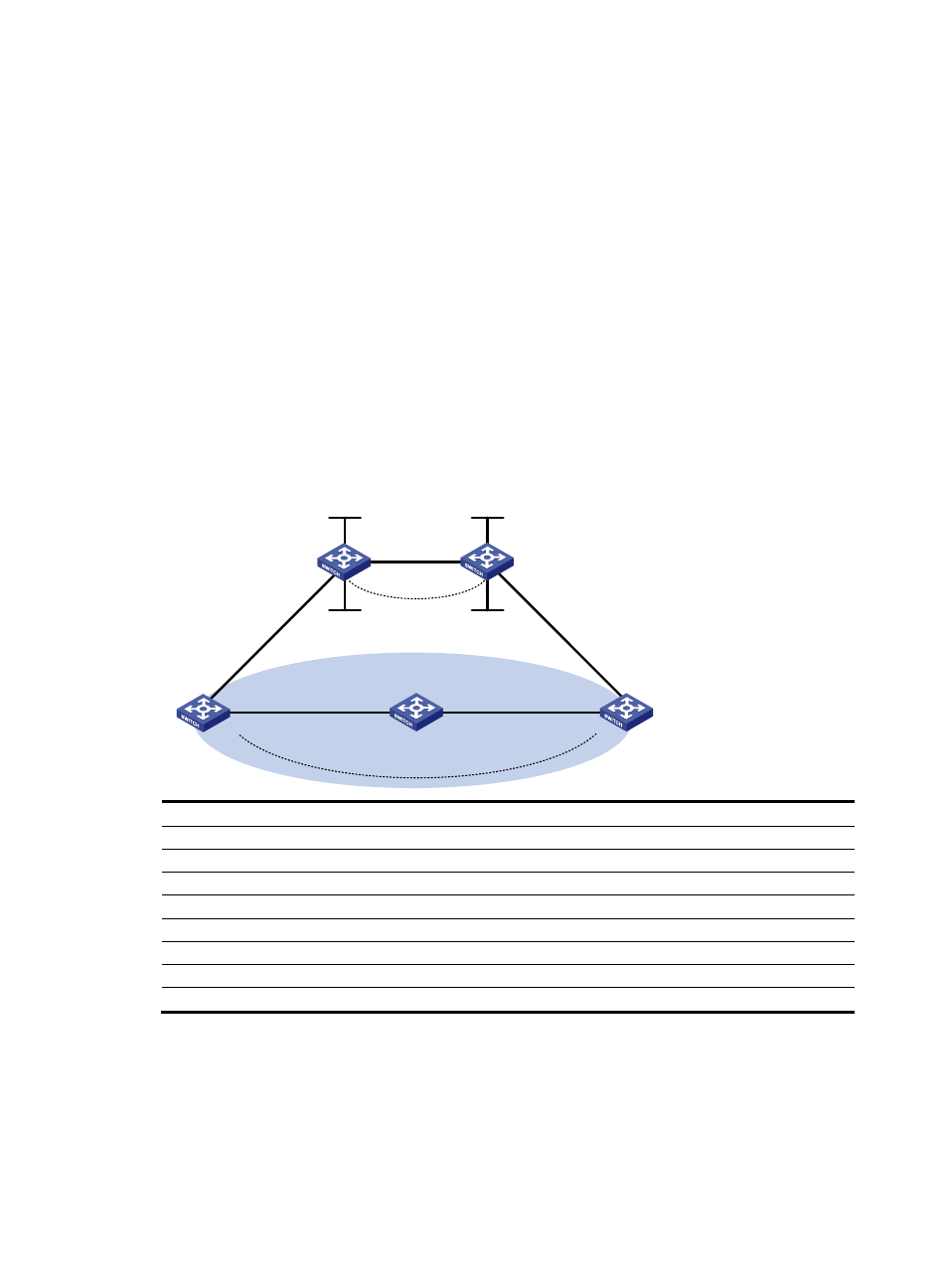Verifying the configuration, Configuring ospf sham links, Network requirements – H3C Technologies H3C S12500-X Series Switches User Manual
Page 203: Configuration procedure

192
[SPE2-bgp] address-family vpnv4
[SPE2-bgp-vpnv4] peer 4.4.4.9 upe route-policy hope export
Verifying the configuration
After completing all the configurations, CE 1 and CE3 can learn each other's interface routes and can
ping each other. CE 2 and CE 4 cannot learn each other's interface routes and cannot ping each other.
Configuring OSPF sham links
Network requirements
As shown in
:
•
CE 1 and CE 2 belong to VPN 1 and are connected to PE 1 and PE 2.
•
CE 1 and CE 2 are in the same OSPF area.
•
VPN traffic between CE 1 and CE 2 is required to be forwarded through the MPLS backbone,
instead of any route in the OSPF area.
Figure 55 Network diagram
Device Interface IP
address
Device
Interface
IP address
CE 1
Vlan-int11
100.1.1.1/24
CE 2
Vlan-int11 120.1.1.1/24
Vlan-int13
20.1.1.1/24
Vlan-int12
30.1.1.2/24
PE 1
Loop0
1.1.1.9/32
PE 2
Loop0
2.2.2.9/32
Loop1
3.3.3.3/32
Loop1
5.5.5.5/32
Vlan-int11
100.1.1.2/24
Vlan-int11
120.1.1.2/24
Vlan-int12
10.1.1.1/24
Vlan-int12 10.1.1.2/24
Switch A
Vlan-int11
20.1.1.2/24
Vlan-int12
30.1.1.1/24
Configuration procedure
1.
Configure OSPF on the customer networks:
Configure conventional OSPF on CE 1, Switch A, and CE 2 to advertise subnet addresses of the
interfaces as shown in
. After the configuration, execute the display ip routing-table
command. The output shows that CE 1 and CE 2 have learned the OSPF route to VLAN interface
1 of each other. (Details not shown.)
Vlan-int12
Loop0
Loop0
Sham-link
CE 1
Switch A
CE 2
PE 2
PE 1
Loop1
Loop1
OSPF Area 1
Backdoor link
Vlan-int12
Vlan-int11
Vlan-int11
Vlan-int13
Vlan-int11
Vlan-int11
Vlan-int12
Vlan-int12
Vlan-int13